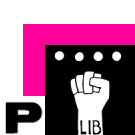|
|
| (2 intermediate revisions by the same user not shown) |
| Line 1: |
Line 1: |
| = Three projects =
| |
|
| |
|
| == Division of the Field ==
| |
|
| |
| ==== What ====
| |
|
| |
| The project Division of the Field about the cancellation of the biennial Manifesta of 2006 consists of forty-nine textile banners and a catalogue with a poster.
| |
|
| |
| ==== How ====
| |
| The banners are meant to be hanged throughout the city of Nicosia on the different sites where the biennial should have taken place. The catalogue serves as a guide to show the reason of the conflict, between the people who were involved, by an infographic per coat of arms.
| |
|
| |
| ==== Why ====
| |
|
| |
| The Manifesta biennial of 2006 in Nicosia was cancelled in a very late stadium of the preparations. Journalists, locals and authorities al claimed different reasons for the eventual cancellation. The project tries to clarify what happened to the public and inhabitants, because have been left in the dark mostly.
| |
|
| |
|
| |
| -----
| |
|
| |
| == Valiz Antennae ==
| |
|
| |
| ==== What ====
| |
|
| |
| Valiz Antennae is a website that unites five of the books in the Antennae Series of Valiz.
| |
|
| |
| ==== How ====
| |
|
| |
| By displaying them according to their related indexes, we are connecting the essays to each other via topical interests. The reader will be guided through the essays via their main selection and related index-words, using a contextual search-engine that looks for neighboring index-words.
| |
|
| |
| ==== Why ====
| |
|
| |
| Amsterdam based publisher Valiz asked us to dive into the world of e-publishing and figure out new ways of digital reading. We ended up making a website, because it is a widely supported medium and we wanted to make it as accessible as possible.
| |
|
| |
|
| |
| -----
| |
|
| |
| == Venices of the North, East and West ==
| |
|
| |
| ==== What ====
| |
|
| |
| Venices of the North, East and West is a republication of Italo Calvino's Invisible Cities combined with descriptions of actual cities, who are all linked to Venice.
| |
|
| |
| ==== How ====
| |
|
| |
| In the publication there are hidden chapters, which if unfolded, show the extra cities next to the fictional ones.
| |
|
| |
| ==== Why ====
| |
|
| |
|
| |
| In the book Invisible Cities it's very clear the cities are fictional, but sometimes some aspect shine through which feel like they reflect real life. My republication shows a relation between the fictional and reality, where it may become hard to distinguish the two.
| |
 XPUB & Lens-Based wiki
XPUB & Lens-Based wiki